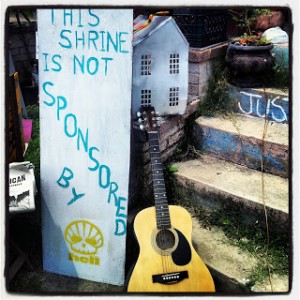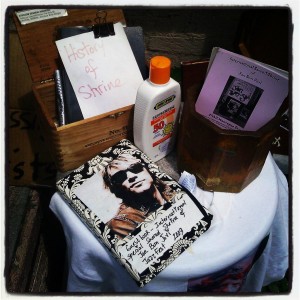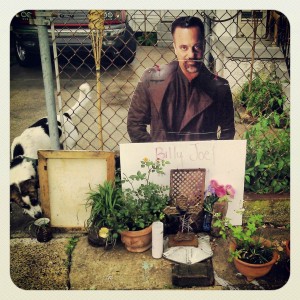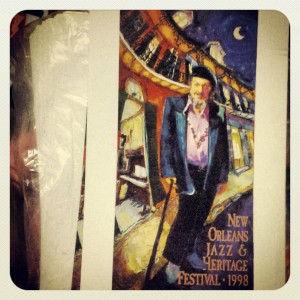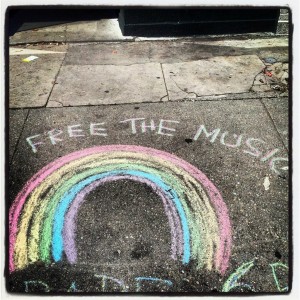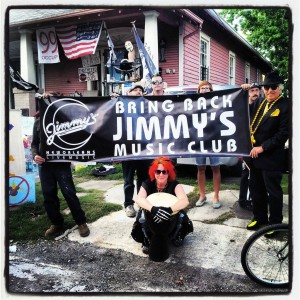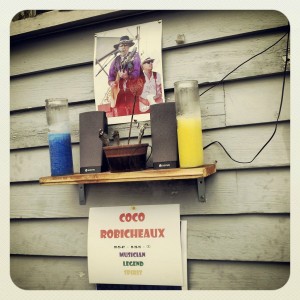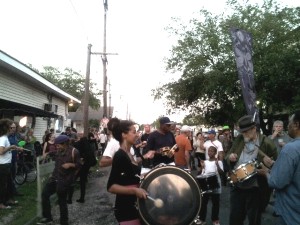In the shadow of the New Orleans Race Track and Fair Grounds thrives one of the city’s most historic and lively neighborhoods, flanked on one side by Bayou St. John and the edge of City Park, and on the others by the 7th Ward, Esplanade Ridge and Mid-City. Each spring, when Jazz Fest takes over the Fair Grounds for a week and a half, these neighborhoods welcome gleeful festers into their streets and even onto their yards and porches for what can be one of the largest block parties one has ever experienced.
As thousands of tourists and metro area residents alike flood the Fair Grounds neighborhood ever day for seven days while partying in and out of the formal Jazz Fest site, neighbors that call this place home year-round find themselves in a sort of involuntary situation – either become a host of the party and open up your front lawn to strangers on vacation, or put up with the noise, crowds, trash and traffic for a week. Then again, there are those residents that have a bit of a different approach to this situation and have undertaken the tradition of building pop music icon shrines on their porches, lawns, home siding and more. Though we have not been able to trace back to when and to whom this Jazz Fest music shrine tradition began exactly, what we do know is that this local practice took on a whole other purpose and broadened scope this year.
In recent years past, a curious Jazz Fest patron walking to or from the Fair Grounds on any one of the surrounding side streets, such as Maurepas Street for example, might happen upon a peculiar collection of posters, painted cardboard images, candles, fruits, metal trinkets and other seemingly odd items perched together on a random stoop. However, one recognizable item would always stand out – a large image of a pop music icon in one form or another. The thread connecting them all? Each of these famous musicians have headlined Jazz Fest.
If it was unclear just what we were to pray to Jon Bon Jovi for at these neighborhood shrines in years past, it was blatantly clear what we were to pray to him, and to to Billy Joel, Dr. John, Fleetwood Mac and others for this year: for New Orleans city officials to end their crack-downs on live music venues and street performers while simultaneously advertising the formal Jazz Fest and the seedy French Quarter’s Bourbon Street to tourists.
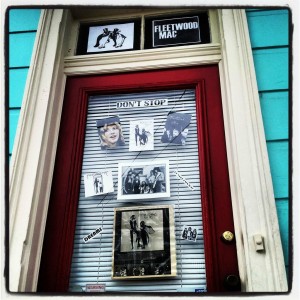
A group of local musicians, artists and community supporters organized not only two protest second lines, one on opening day of the Jazz Fest week and one on the closing evening, to parade through the surrounding neighborhoods, but also documented the increased number of “music icon shrines” that popped up during the week. Shrines hoisting images of artists headlining this year’s Jazz Fest, like Billy Joel, Fleetwood Mac or New Orleans’ own Dr. John and the late Coco Robicheaux into saint-like positions invited passers-by to stop and pray for the New Orleans music community. We’re not sure if these pop stars were supposed to then be imbued with the spirit of the people and make grand announcements on stage at the festival, or if through their general influence the music community’s wishes of performing music on the streets and in small venues permit-free would come true. Regardless, the pattern became more and more clear as the week went on and more shrines seemed to grown out of the ground.
Between the shrines, brightly colored chalk rainbows and stenciled messages marked footpaths that led eventually to what became known as the “Justice Fest” headquarters in the neighborhood, as well as portions of the “Free the Music” Second Line parade route that took place during the closing hours of the final day of Jazz Fest on Sunday, May 5, while droves of visitors exited the Fair Grounds.
Both the shrines and the Second Line bore brazen hand-made signs carrying messages such as “Free the Music,” “This Shrine is Not Sponsored by (s)Hell,” “Reclaim the Right to Play Music,” and “Bring Jimmy’s Music Club Back.” These were passionate messages expressed by members of some of the organizing groups Bywater Rising, Occupy the Stage (a division of Occupy NoLa) and those rallying to re-open the legendary Jimmy’s Music Club uptown, which has been unsuccessful due to new policy for nearly a year.
If you missed these unique activities during Jazz Fest week, the Bywater Rising and Free the Music protest Second Lines were live-streamed and some video clips can be viewed here. A collection of social media photos of the shrines and the parade participants like the Skinz n Bonez krewe and more can also be viewed on the groups’ various blogs:
Will pop star shrines, rainbow sidewalks and protest second lines draw significant enough awareness to the cultural regulation issues New Orleans musicians are currently facing under new administrative initiatives to formalize entertainment for tourism? Did you take notice? Or did this fly under your radar? Will musicians have to put on suits and play hard ball with the big boys (and girls) at City Hall to truly make their case? Tell us what you think!
Comment below here, or send a Letter to the Editor via offbeat@offbeat.com.

